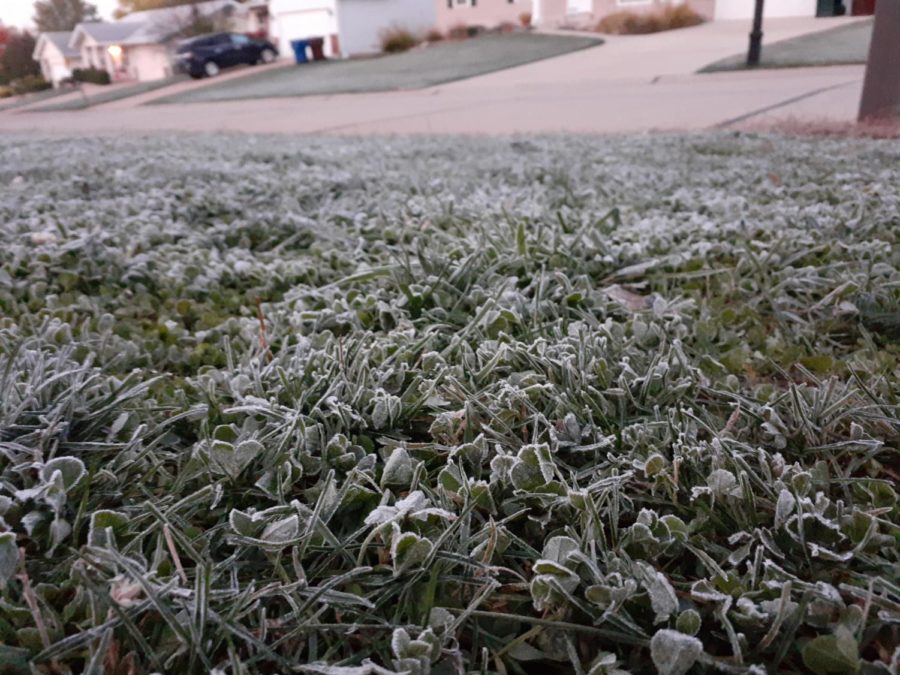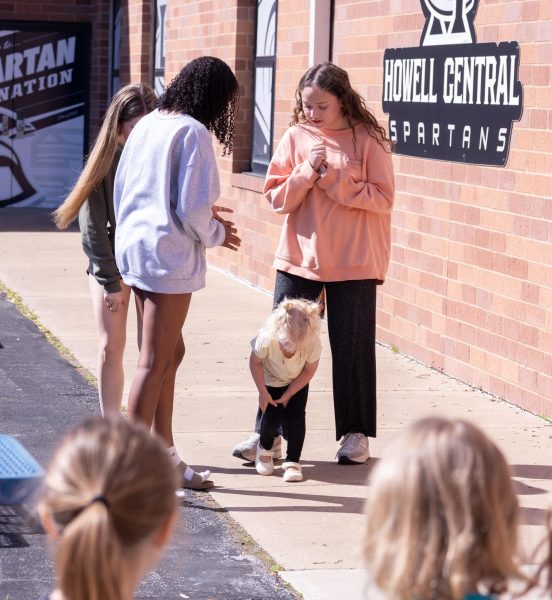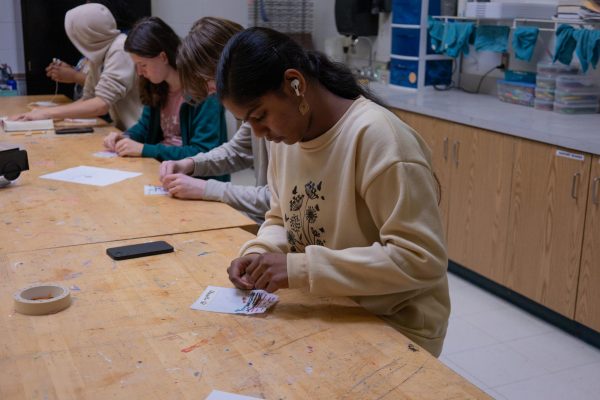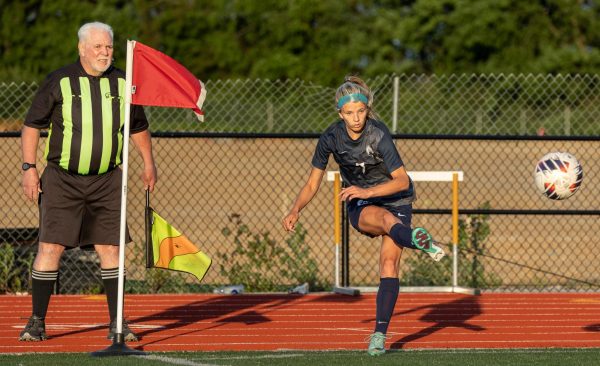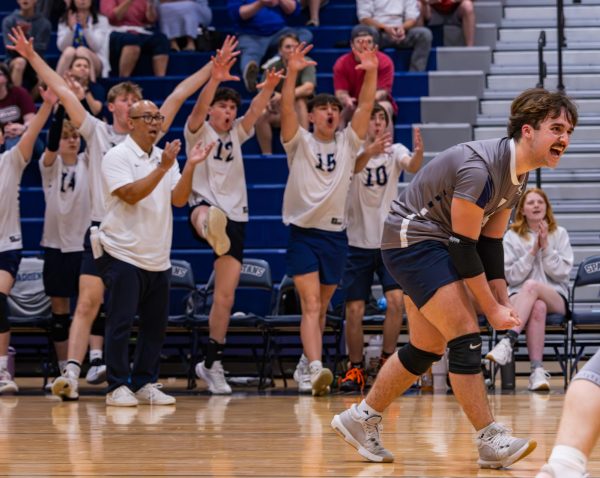A Change In Plans
How virtual learning as a replacement for snow days is ineffective
Frost covers the grassy ground in a St. Peters neighborhood. With the recent drop into freezing temperatures, this is becoming a much more common sight for students when they wake up in the morning, signaling the arrival of the winter season.
With the recent drop into freezing temperatures begins a new chapter in the school year: the chapter of hoping, wishing and praying for the snow days that the changing of the seasons has finally made a possibility. There is nothing more relieving than waking up on a cold, winter school day to a parent gently telling you to turn your alarm off and go back to sleep because school has been cancelled. When you finally decide to get out of bed, you look out your window to see a beautiful sheet of white resting on the ground and the trees, and you’re able to spend the day without the worries or cares of school. From the excitement of spending a day bundled up building snowmen during elementary school to the relief of having an opportunity to rest and recharge once you hit high school, the unexpected breaks offered by snow days are enjoyed by students K-12.
The topic of snow days was addressed last fall by Francis Howell School District Superintendent, Dr. Nathan Hoven. In a Nov. 23, 2020 email sent to parents, he addressed the trend of Missouri schools trading snow days for virtual learning days. These are days when, due to inclement weather students are unable to attend school on campus, students would participate in educational activities from home via electronic devices. He stated that through the 2020-2021 school year, snow days in our district would continue as normal. “In a year in which so many things have been changed or cancelled due to the pandemic, we look forward to keeping the snow day tradition alive,” the email read.
However, it would seem that things have changed per this school year, and that the concerns the District previously had about an overabundance of change due to the pandemic or the belovedness of a timeless tradition have faded away. Ultimately, the school district did decide to keep their snow day policies from past years in place for the remainder of the 2021-2022 Academic year, with minor changes reflecting how many days will be made up at the end of the school year when snow days do occur. However, in an email sent in October, parents were asked to fill out a survey about their preferences for winter weather – which included snow days versus virtual learning options. Personally, I was very disappointed to hear of virtual learning days being considered in our district. While in theory it may seem a good idea to implement virtual learning in an effort to minimize time added in make-up days at the end of the year, I can’t help but see virtual learning as more of an additional problem than an innovative solution.
Aside from being a beloved tradition spanning generations, there simply are not the capabilities for all students in our district to participate in off-site learning days. Not every student is going to have electronic devices or reliable internet access at their home, and the district cannot guarantee devices and hotspots to every student – they can’t even provide an electronic device to each individual student while on campus. If our schools are unable to provide the supplies necessary for an off-site learning experience, it is entirely unfair for them to require it of students.
Yet difficulties in providing the ability for students to participate in off-site learning aside, it would be incredibly ineffective in terms of efficiency in the classroom and students’ retention of information. This is a game we’ve been playing since kindergarten with substitute teachers – the teacher can’t be present to instruct class, and the last minute change in plans results in busy work. The actual lessons planned by the teacher are pushed back. Students rarely learn any new information, and the only thing that results is a couple extra points in the grade book for an assignment that has little academic value and won’t do anything to help students meet academic markers in the first place.
This is exactly the same thing that would happen with our snow days. My friends from school such as St. Dominic, who already have “e-learning days” as a replacement for snow days, are always complaining about the monotony and pointlessness of the work they are assigned those days. From extra worksheets on material they’ve already covered to even coloring sheets, the work they do is often stupidly pointless. We all know that this is exactly what our learning days at home would become. Since the weather is unpredictable and difficult to plan for, teachers wouldn’t be able to prepare meaningful lessons in advance and would simply scramble to find something to assign – even if it wasn’t particularly beneficial in terms of fostering academic success. By instituting virtual learning days in place of snow days, the only thing we are doing is heaping more stress upon teachers and students who could be using the time to rest and recharge, or as additional time to work on responsibilities that were already on their minds.
But even if completing additional school work at home was academically helpful, it would still do more harm than good for many families. Snow days alone often throw a wrench in family plans. If parents are still expected to work but their children are required to stay home from school, required assignments at home could be particularly problematic. As magical and fun as snow days may seem to students, it cannot be argued that they aren’t already inconvenient for many parents. Adding the responsibility of having to help their children complete homework is completely unfair, particularly when that responsibility may very well be passed on to older siblings – who would be assigned their own school work to complete – if their parents are unable to help because of their work. This pressure is not a fair burden to place on families, particularly in a time when many are still struggling due to changes in employment and lifestyle as a result of the pandemic.
Yes, I understand the potential benefits are enticing. The idea of less added days at the end of the school year, the allure of being more efficient. Our world today is so face-paced and so enveloped in the hustle mentality, it’s tempting not to take an opportunity to keep the world going when braking can be incredibly inconvenient. But at the end of the day, we need to remember that taking a break isn’t a bad thing. It’s not a bad thing to have days in the middle of the year to rest and recharge, to be able to take an unexpected break. It’s not bad to have a day off once in a while. Not everything needs to be improved upon, and while progress can be so important and beneficial for our society we have to learn that not everything needs to be changed or modernized as time goes on. As the popular cliche goes – “if it ain’t broke, don’t fix it.”
At the end of the day, snow days are a beloved tradition carrying a legacy of beautiful and cherished memories. It’s not only that virtual learning days are pointless and detrimental – it’s also that we owe it to ourselves and our posterity to hold fast to this beloved custom that has brought us so much joy throughout the years. I applaud the district for the decision they’ve made in keeping snow days alive this winter, and encourage them to follow the same trend in years to come. Cold winters and snowy weather will never leave – and I hope and pray that the looming hope and possibility for a day off of school in the middle of January won’t, either.
Your donation will support the student journalists of Francis Howell Central High School. Your contribution will allow us to purchase equipment and cover our annual website hosting costs. FHCToday.com and our subsequent publications are dedicated to the students by the students. We hope you consider donating to allow us to continue our mission of a connected and well-informed student body.



